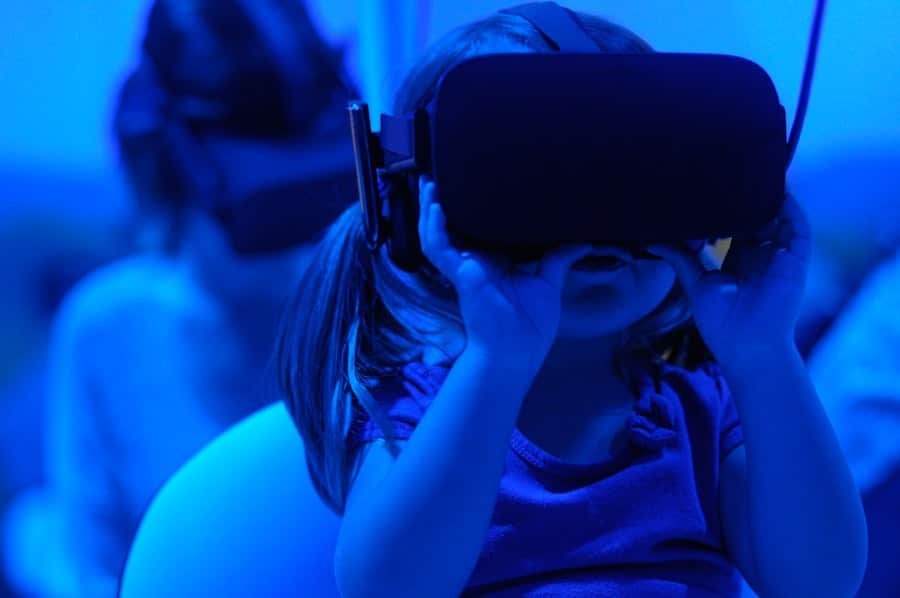In recent years, the digital landscape has witnessed the emergence of a novel phenomenon: virtual influencers. These are computer-generated characters that possess the ability to engage with audiences on social media platforms, much like their human counterparts. Virtual influencers are designed with intricate details, from their appearance to their personalities, and they often embody specific traits that resonate with target demographics.
Unlike traditional influencers, who are real individuals sharing their lives and opinions, virtual influencers are entirely fabricated, existing solely in the digital realm. This innovative approach to influence has sparked considerable interest among brands and marketers, as it opens up new avenues for engagement and creativity. The allure of virtual influencers lies not only in their aesthetic appeal but also in their capacity for consistent branding and messaging.
They can be programmed to align perfectly with a brand’s values and objectives, ensuring that every interaction is on-message and strategically sound. As the lines between reality and digital creation blur, virtual influencers have begun to carve out a unique niche within the broader influencer marketing landscape. Their rise signifies a shift in how brands approach consumer engagement, leveraging technology to create relatable yet entirely fictional personas that can captivate audiences in ways that traditional influencers may not.
Summary
- Virtual influencers are computer-generated characters that have gained popularity in the digital age.
- The rise of virtual influencers has been driven by advancements in technology and the increasing use of social media platforms.
- Virtual influencers have a significant impact on marketing, as they can reach a wide audience and engage with consumers in unique ways.
- Creating and managing virtual influencers involves a combination of animation, storytelling, and social media management.
- Ethical and legal considerations surrounding virtual influencers include transparency, authenticity, and intellectual property rights.
The Rise of Virtual Influencers in the Digital Age
The ascent of virtual influencers can be attributed to several factors that characterise the digital age. Firstly, the proliferation of social media platforms has created an environment ripe for new forms of engagement. With billions of users worldwide, platforms such as Instagram, TikTok, and YouTube have become fertile ground for influencers to thrive.
In this context, virtual influencers have emerged as a fresh alternative, offering brands a unique way to connect with consumers while circumventing some of the challenges associated with human influencers, such as authenticity issues or personal controversies. Moreover, advancements in technology have made it increasingly feasible to create lifelike digital characters. The use of sophisticated animation software and artificial intelligence allows for the development of virtual influencers that can interact with followers in real-time, respond to comments, and even evolve their personalities over time.
This technological evolution has not only enhanced the realism of virtual influencers but has also expanded their potential applications across various industries. From fashion to gaming, brands are beginning to recognise the versatility of these digital personas, leading to a surge in their popularity and utilisation.
The Role and Impact of Virtual Influencers in Marketing

Virtual influencers have begun to play a pivotal role in marketing strategies across diverse sectors. Their ability to engage audiences without the unpredictability associated with human influencers makes them an attractive option for brands seeking to maintain a consistent image. For instance, companies can craft narratives around virtual influencers that align seamlessly with their marketing campaigns, ensuring that every post reinforces brand messaging.
This level of control is particularly appealing in an era where brand reputation can be easily tarnished by a single misstep from a human influencer. Furthermore, virtual influencers can be tailored to embody specific characteristics that resonate with target audiences. For example, a brand targeting Gen Z consumers might create a virtual influencer with a vibrant aesthetic and a playful personality, while a luxury brand may opt for a more sophisticated and polished character.
This targeted approach allows brands to engage with consumers on a deeper level, fostering loyalty and connection through relatable content. The impact of virtual influencers on marketing is profound; they not only enhance brand visibility but also facilitate meaningful interactions that can drive consumer behaviour.
How Virtual Influencers are Created and Managed
The creation of virtual influencers involves a complex interplay of artistry and technology. Initially, designers conceptualise the character’s appearance, personality traits, and backstory. This process often includes extensive research into current trends and audience preferences to ensure that the character resonates with potential followers.
Once the concept is established, 3D modelling software is employed to bring the character to life, allowing for intricate details such as facial expressions and movements that mimic human behaviour. Management of virtual influencers is equally critical to their success. Brands typically employ teams of social media managers, content creators, and animators who work collaboratively to produce engaging content that aligns with the influencer’s persona.
This content can range from lifestyle posts to interactive stories that encourage audience participation. Additionally, analytics tools are utilised to monitor engagement metrics, enabling brands to refine their strategies based on real-time feedback. The ongoing management of virtual influencers ensures that they remain relevant and appealing to their audience while maintaining alignment with brand objectives.
The Ethical and Legal Considerations of Virtual Influencers
As virtual influencers gain traction within the marketing landscape, ethical and legal considerations have come to the forefront of discussions surrounding their use. One significant concern is transparency; audiences may not always be aware that they are interacting with a computer-generated character rather than a real person. This lack of transparency raises questions about authenticity and trust, which are crucial elements in influencer marketing.
Brands must navigate these concerns carefully, ensuring that they disclose the nature of their virtual influencers to maintain credibility with consumers. Legal considerations also play a vital role in the discourse surrounding virtual influencers. Issues such as copyright ownership of the character’s likeness and personality can become complex, particularly when multiple parties are involved in the creation process.
Additionally, regulations regarding advertising standards must be adhered to; for instance, if a virtual influencer promotes a product or service, it must be clearly marked as an advertisement. As this field continues to evolve, it is imperative for brands and marketers to stay informed about legal frameworks and ethical guidelines to mitigate potential risks associated with virtual influencer campaigns.
The Future of Virtual Influencers in the Influencer Marketing Industry

The future of virtual influencers appears promising as they continue to gain traction within the influencer marketing industry. As technology advances further, we can expect even more lifelike representations and sophisticated interactions from these digital personas. The integration of augmented reality (AR) and virtual reality (VR) could revolutionise how audiences engage with virtual influencers, creating immersive experiences that blur the lines between reality and digital creation.
Such innovations could lead to entirely new forms of storytelling and engagement strategies that captivate consumers in unprecedented ways. Moreover, as consumer preferences shift towards authenticity and relatability, virtual influencers may evolve to reflect these demands by incorporating more nuanced personalities and diverse backgrounds. Brands may begin to experiment with creating virtual influencers that challenge traditional beauty standards or represent underrepresented communities, thereby fostering inclusivity within the digital space.
This evolution could not only enhance audience engagement but also contribute positively to societal conversations around representation in media.
The Advantages and Disadvantages of Using Virtual Influencers
Utilising virtual influencers presents several advantages for brands seeking innovative marketing strategies. One notable benefit is the ability to maintain complete control over the influencer’s image and messaging. Unlike human influencers who may face personal controversies or shifts in public perception, virtual influencers can be designed to embody specific traits consistently over time.
This reliability allows brands to craft coherent narratives without the risk of unexpected backlash. However, there are also disadvantages associated with employing virtual influencers. One significant drawback is the potential lack of emotional connection that audiences may feel towards a computer-generated character compared to a real person.
While virtual influencers can be designed to appear relatable, they may struggle to evoke genuine empathy or connection in the same way that human influencers do. Additionally, there is an inherent risk in over-reliance on technology; if audiences begin to perceive virtual influencers as disingenuous or overly commercialised, it could undermine their effectiveness as marketing tools.
Tips for Brands and Marketers on Collaborating with Virtual Influencers
For brands looking to collaborate with virtual influencers effectively, several key strategies can enhance the partnership’s success. Firstly, it is essential to ensure that the virtual influencer aligns closely with the brand’s values and target audience. Conducting thorough research into audience preferences will help inform the character’s design and personality traits, ensuring that they resonate authentically with potential followers.
Secondly, brands should prioritise transparency when working with virtual influencers. Clearly disclosing that an influencer is computer-generated fosters trust among audiences and mitigates concerns about authenticity. Engaging storytelling is also crucial; brands should leverage the unique capabilities of virtual influencers by creating compelling narratives that captivate audiences while showcasing products or services organically.
Lastly, continuous monitoring and adaptation are vital components of successful collaborations with virtual influencers. By analysing engagement metrics and audience feedback, brands can refine their strategies over time, ensuring that their campaigns remain relevant and impactful in an ever-evolving digital landscape. Embracing flexibility will allow brands to navigate challenges effectively while maximising the potential benefits of working with these innovative digital personas.
Virtual influencers are becoming increasingly popular in the world of social media marketing. These computer-generated personalities have the ability to engage with audiences in a way that traditional influencers cannot. In a related article on 3 tips for growing your business, it discusses the importance of staying ahead of the curve and embracing new marketing strategies such as virtual influencers to reach a wider audience and drive sales. By incorporating virtual influencers into your marketing strategy, businesses can stay relevant and connect with consumers in a more authentic and engaging way.
FAQs
What are Virtual Influencers?
Virtual influencers are computer-generated characters or avatars that are designed to look and behave like real people. They are used in marketing and advertising to promote products and services to a target audience.
How are Virtual Influencers created?
Virtual influencers are created using computer graphics and animation software. Designers and artists use these tools to create a realistic-looking character with a unique personality and style.
What is the purpose of Virtual Influencers?
The purpose of virtual influencers is to engage with a target audience and promote products or services in a more creative and innovative way. They are often used in social media marketing and influencer campaigns.
Are Virtual Influencers becoming popular?
Yes, virtual influencers are becoming increasingly popular in the marketing and advertising industry. Many brands are using them to reach a younger, tech-savvy audience and to stand out in a crowded market.
Do Virtual Influencers have a real impact on consumers?
There is evidence to suggest that virtual influencers can have a real impact on consumers. They are often seen as more relatable and aspirational than traditional influencers, and their unique digital presence can capture the attention of a wide audience.
 Assessing a major infrastructure project (PDF)
Assessing a major infrastructure project (PDF) 